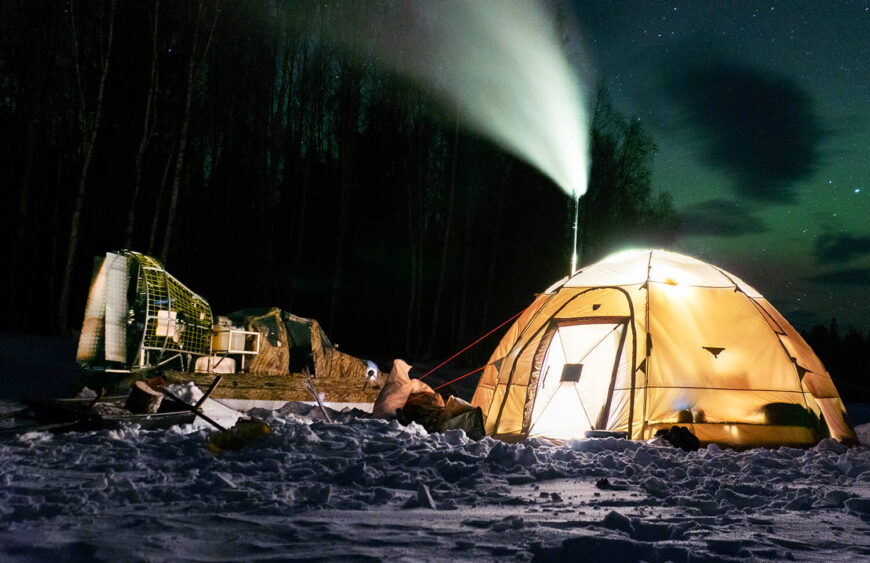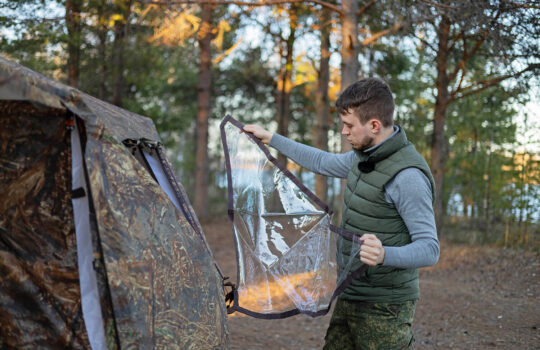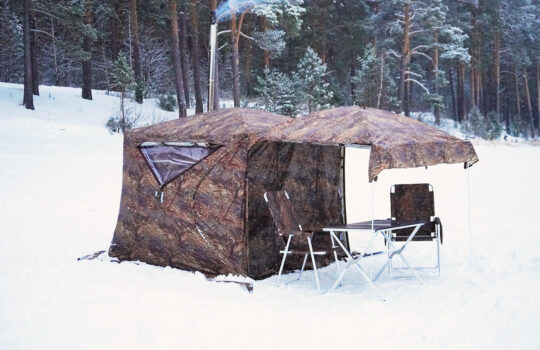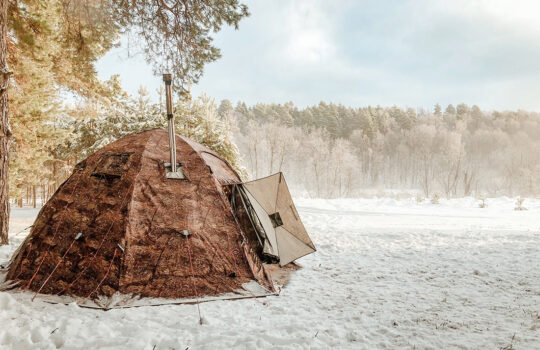Tent condensation. How to prevent it
Spending time outdoors, away from the hustle and bustle of the city, is very popular these days. How make the camping trip better? Learn some information that help to reduce condensation, one of the main ruiners of the outdoor activity.
What is this unwelcome guest for campers? How does it form? And how can you prevent condensation in a tent? Let’s break it down in detail!
What is condensation?
Condensation is the result of water vapor becoming liquid. It is a natural phenomenon. One of the most common causes is a temperature difference. When warm and cold air meet, moisture forms as water droplets at the point where they collide – this is called the dew point.
In the case of a single-layer tent, the dew point is on its fabric, as it serves as the boundary between the warm interior and the cold outside. When using a camping stove or heater, the warmer your shelter interior gets, the faster this moisture evaporates.
Causes of condensation in a tent

Let’s understand condensation – where it comes from and why it happens.
We can group the causes into two main types: outside factors and inside factors.
Outside factors:
- Temperature difference between the interior and exterior.
- Precipitation (rain, snow).
- Air humidity levels.
If it rains or you camp near water, humidity rises – making condensation more likely.
Inside factors:
- Breathing of people inside.
- Wet clothing, gear and footwear.
- Cooking inside the tent.
- Poor ventilation.
In which tents does condensation form?
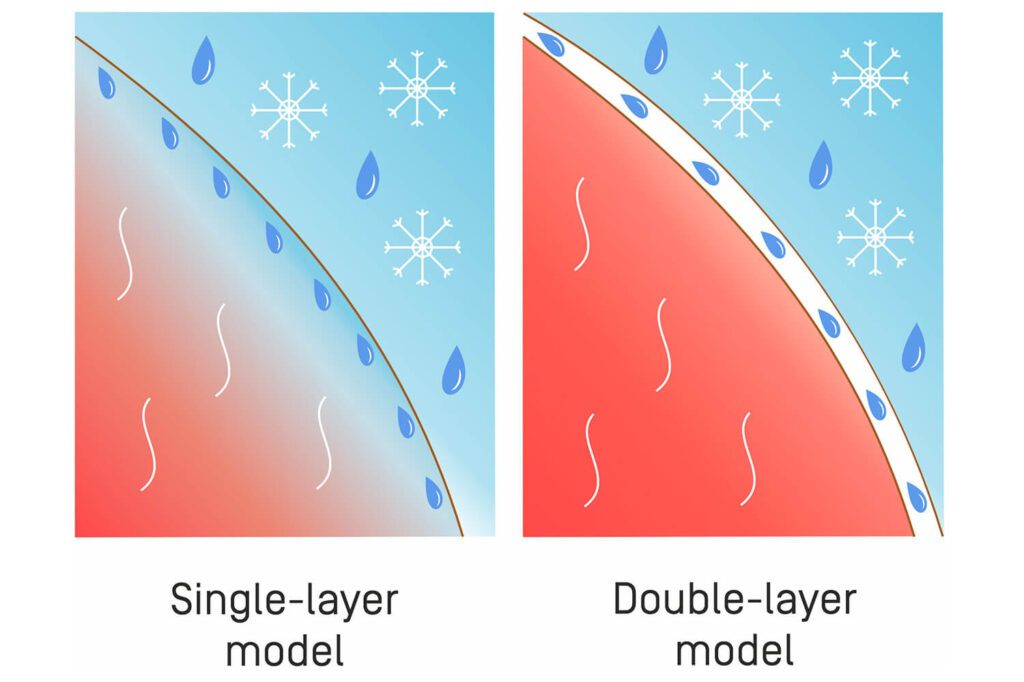
The short answer: in all tents people use! As we have learnt, condensation is a natural phenomenon. It is most noticeable during colder seasons like winter and autumn. Below, we will explore how condensation forms in different tent types and its practical impact on your camping experience.
Single-layer models
They consist of one fabric layer stretched over a frame. Due to temperature differences, condensation forms on inner walls. To remove moisture, you need to heat the tent more intensely and ventilate it frequently, increasing fuel (wood or briquettes) consumption.
Therefore, we recommend single-layer tents for:
- Camping saunas.
- Field kitchens.
- Fishing shelters (without overnight stays).
- Use only in warm weather.
Double-layer models
They have a frame, an outer fly and an inner fly with an air gap in between. The dew point is in the space between the layers, where condensation collects. You can remove it by lightly shaking your shelter. The interior stays dry, but you must adjust the ventilation openings. For all-season camping with overnight stays, double-layer models are the best choice.
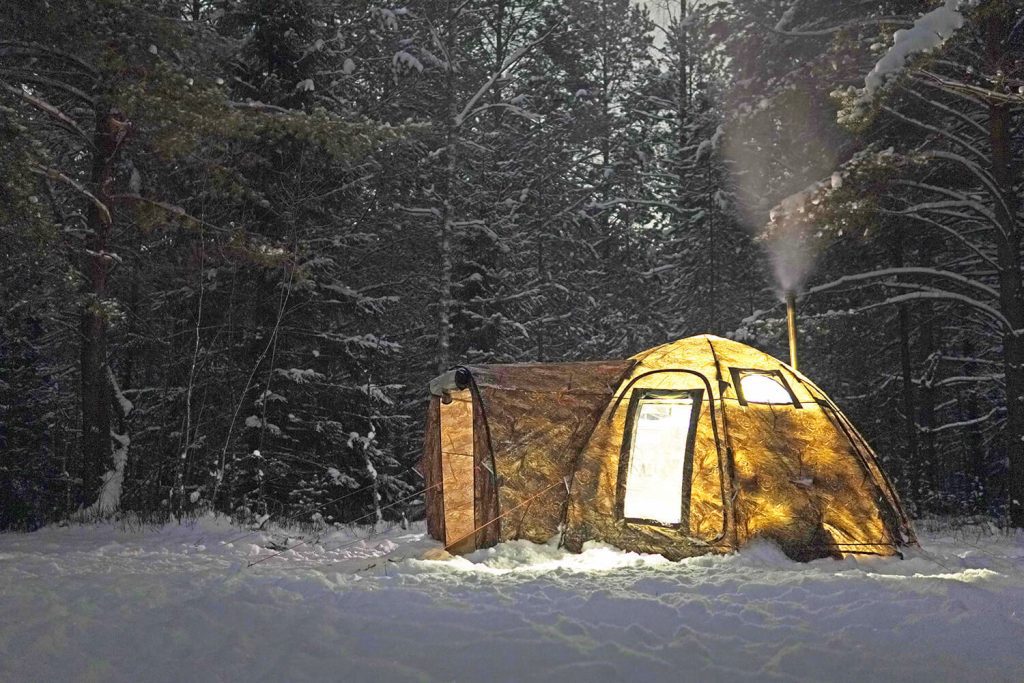
How to prevent condensation in a tent
It is easy to reduce condensation buildup. Follow these simple steps to keep your tent dry and cozy:
- Keep ventilation open in any weather. This ensures constant airflow and reduce condensation.
- Ventilate the tent often, especially before sleeping.
- Avoid storing wet clothes inside. Dry them outside if possible. If not, heat the tent well and ventilate before bedtime.
- Heat the tent properly according to weather conditions. This helps dry the fabric and remove internal moisture.
- Use all guy lines of double-layer tents. Properly tensioned guy lines maximize the air gap and prevent tent condensation forming.
- Choose a campsite away from water or under tree cover. This reduces humidity and minimizes precipitation exposure.
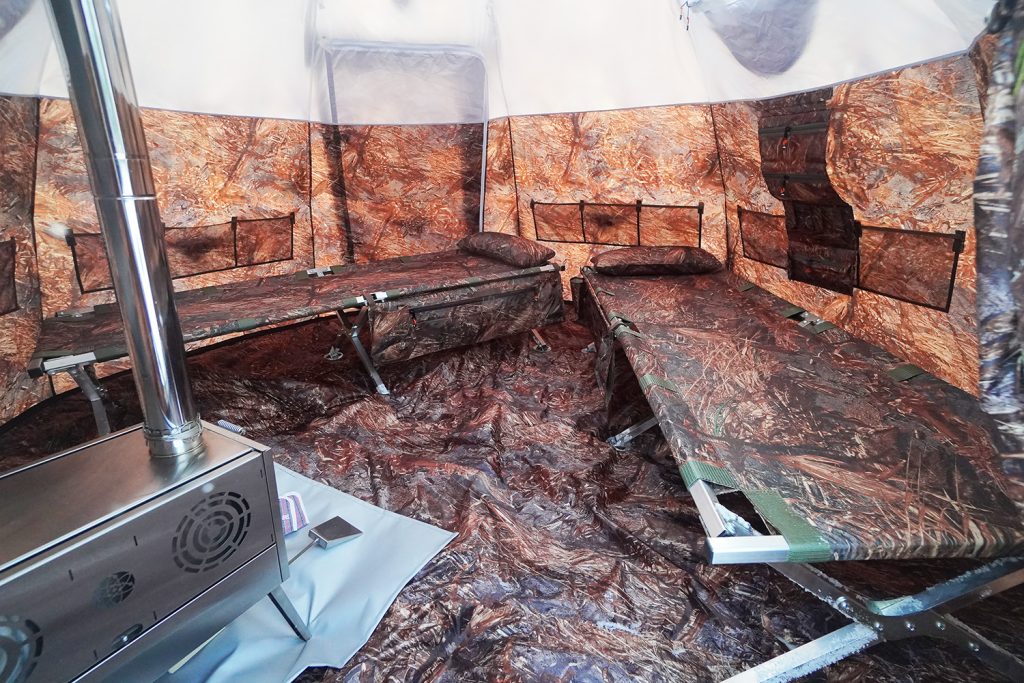
Helpful tips and facts
Wet walls? The best solution is ventilation and drying. If that is not possible, wipe the inside with a paper towel or cloth.
Why is a double-layer tent wet inside? If you see moisture in a double-layer tent (with properly sealed seams), it is likely not a leak. Check if you have followed all condensation prevention tips.
Condensation in one corner? In extreme cold, if a heater warms one side but condensation forms in another, possible causes include:
- Inner and outer flies touching in that area.
- A snowdrift pressing against the exterior fabric.
- Gear placed too close to the wall.
Solution: Move items away from the wall, increase heating and adjust ventilation.
How much condensation forms overnight? One person’s breathing can produce up to 0.6 liters of condensation per night. For three people, that’s about 2 liters – and that’s just from breathing!
Extend your gear lifespan
- After every trip, regardless of season or weather, dry your tent thoroughly.
- All-season tents are made from windproof, water-resistant fabrics. If stored wet, moisture trapped in folds can lead to mold growth.
- Store the gear in a dry place, preferably in a waterproof storage bag.
Now you know how to prevent condensation in a tent. Follow these simple rules, and your camping trips will be even more comfortable!

